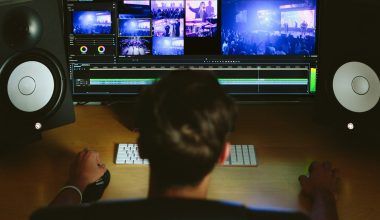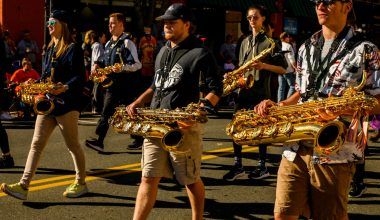Are you a creator looking to buy music for your YouTube channel? Or maybe you’re a musician selling your tracks to content creators. Either way, understanding music verification on YouTube is essential. It ensures that music rights are respected and protects both buyers and sellers from copyright issues. But the process can seem a little confusing if you’re new to it. Don’t worry, though. In this blog, we’ll break down everything you need to know about music verification on YouTube for sale.
What is Music Verification on YouTube?
Music verification on YouTube is a way to ensure that the music used in videos is properly licensed. This means the music either belongs to the creator, is royalty-free, or has been purchased with the proper rights. YouTube’s Content ID system scans videos for copyrighted material, so if you’re using music without permission, you could face penalties, including demonetization or even takedowns.
For those selling music, verification ensures that your tracks are used legally. If your music is uploaded without permission, Content ID can detect it and flag the unauthorized use. This system is a win-win, protecting musicians and giving creators peace of mind.
Why Music Verification Matters for YouTube Creators
If you’re a YouTube creator, you already know how important it is to use music that’s free of copyright issues. A single mistake can lead to a claim on your video, meaning you lose revenue or even your video altogether. Music verification helps creators avoid this by making it easy to verify purchased tracks.
Creators often buy music from platforms that specialize in tracks for YouTube. These platforms usually provide licenses that show proof of purchase, which you can use if YouTube flags your video. This process ensures your content stays safe and monetizable.
For Musicians: Selling Music for YouTube
If you’re a musician selling tracks for YouTube, music verification ensures your work isn’t misused. By uploading your music to platforms that connect with YouTube’s Content ID, you can track where your music is being used. This is especially helpful if someone uses your track without buying it. Content ID will alert you, allowing you to take action or claim revenue from the video.
Selling music for YouTube isn’t just about uploading your tracks. You also need to make sure they’re easily verifiable. This means working with platforms that provide clear licensing documentation for buyers.
How to Buy Music for YouTube
When you’re buying music for your YouTube channel, you’ll want to ensure it’s properly licensed. Here’s how:
- Choose a Reliable Platform: Look for platforms that specialize in YouTube music, like Epidemic Sound or AudioJungle. These platforms often include licensing as part of the purchase.
- Read the Terms: Make sure the license covers YouTube use. Some tracks may have restrictions on commercial use or require additional fees.
- Download and Save Documentation: Always save proof of your purchase and license. If your video gets flagged, you’ll need this to resolve the issue.
Tips for Selling Music for YouTube
If you’re selling music for YouTube, follow these tips to maximize your sales and protect your rights:
- Use Content ID: Register your tracks with YouTube’s Content ID to track their use and claim revenue when necessary.
- Offer Clear Licenses: Buyers prefer platforms that make licensing simple. Provide clear documentation with every sale.
- Promote Your Tracks: Use social media and other channels to let creators know your music is available. Focus on promoting how your tracks are perfect for YouTube content.
Common Issues with Music Verification on YouTube
Sometimes, even with proper licensing, you might run into issues with YouTube’s Content ID. Here are a few common problems and how to solve them:
- False Claims: Occasionally, Content ID may flag your video even if you have a valid license. In this case, contact the platform where you purchased the music. They can often resolve the issue quickly.
- No License Proof: If you lose your license document, it can be hard to resolve a claim. Always save your license in a safe place.
- Unauthorized Use: If you’re a musician and someone uses your track without permission, Content ID can help you claim revenue or issue a takedown notice.
Finding the Best Platforms for YouTube Music
When looking for music to use or sell on YouTube, the platform you choose matters. Here are some popular options:
- Epidemic Sound: Known for its vast library and simple licensing.
- AudioJungle: A great marketplace for unique tracks.
- Artlist: Focused on high-quality, royalty-free music.
- Pond5: Offers both music and video assets.
Each platform has its strengths, so explore them to find the best fit for your needs.
How to Ensure Music Verification Runs Smoothly
Whether you’re a buyer or a seller, keeping the process smooth is crucial. Here are a few tips:
- Stay Organized: Keep all your licensing documents in one place. Digital folders labeled by platform or project work well.
- Understand the Rules: Familiarize yourself with YouTube’s policies on copyrighted material.
- Communicate: If an issue arises, don’t hesitate to reach out to the platform where you bought or sold the music. They’re often equipped to help.
Why Music Verification is Evolving
The demand for music on YouTube continues to grow, and with it, the need for better verification processes. Platforms are constantly improving their systems to make licensing easier and more secure. For creators, this means fewer headaches. For musicians, it means better protection of their work.
In the future, we can expect more advanced tools that simplify music verification. AI might play a bigger role, identifying tracks more accurately and resolving disputes faster. Staying informed about these changes will help you adapt and thrive, whether you’re buying or selling music.
Final Thoughts on Music Verification on YouTube for Sale
music verification youtube for sale doesn’t have to be overwhelming. By understanding the basics and following best practices, you can navigate the process with ease. Whether you’re a creator looking for the perfect track or a musician wanting to sell your work, music verification ensures that everyone benefits. It’s all about creating a fair and enjoyable environment for content creation.
Remember, the key is to stay informed and organized. Use reliable platforms, keep your documentation safe, and always follow YouTube’s guidelines. With these steps, you can focus on what matters most: creating or sharing amazing content.
For further reading, explore these related articles:
- Taylor Swift Spotify Streams: How She Became the Queen of Streaming
- Mo Bamba Lyrics: The Story of a Song That Took the World by Storm
For additional resources on music marketing and distribution, visit DMT Records Pvt. Ltd..






